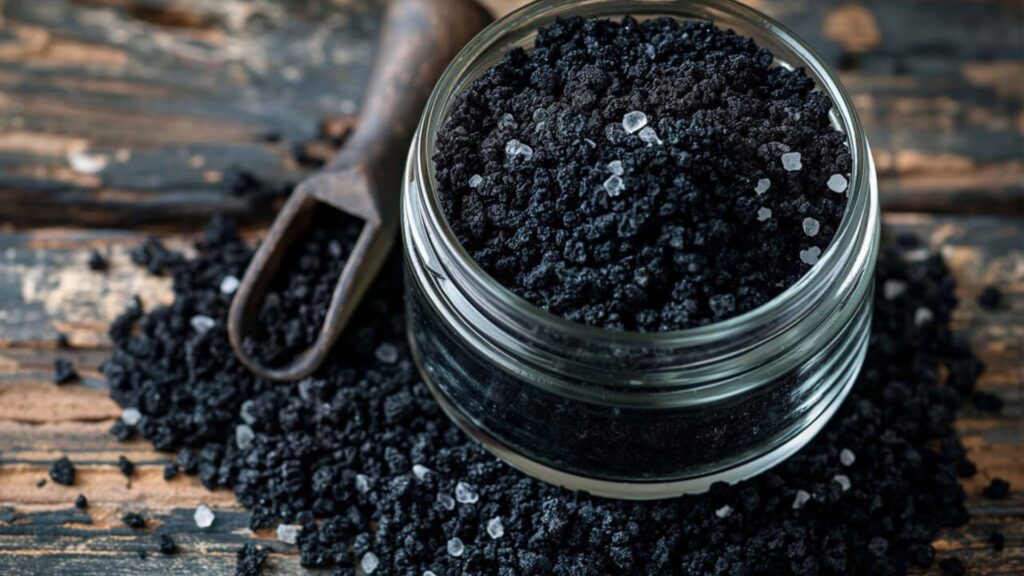
How to Make Black Salt (Kala Namak) – A Step-by-Step Guide from Raw Salt to Finished Product
How to Make Black Salt (Kala Namak) – A Step-by-Step Guide from Raw Salt to Finished Product Black salt, also known as Kala Namak, is

Ever wondered why Himalayan salt comes in a range of colors, from pristine white to deep red? These vibrant hues are not just aesthetically pleasing; they also reveal fascinating insights into the salt’s mineral composition and purity. In this blog, we’ll delve into the world of Himalayan salt colors and uncover what each shade means for your health and culinary adventures.
Himalayan salt, often referred to as “pink gold,” is a rare and precious mineral that has been treasured for its purity and health benefits for centuries. This salt is mined from the ancient Khewra Salt Mine in Pakistan, which is located deep within the majestic Himalayan mountain range. The salt deposits in this region were formed millions of years ago when ancient seas evaporated, leaving behind a treasure trove of mineral-rich salt crystals.
One of the most fascinating aspects of Himalayan salt is its wide range of colors, each of which tells a unique story about the salt’s mineral content and purity. Let’s explore the different hues and what they mean:

White Himalayan salt is the purest form of this mineral, with a minimal amount of impurities and trace minerals. This salt is typically found in the upper layers of the salt mine and is highly prized for its delicate flavor and versatility in the kitchen. White Himalayan salt is perfect for seasoning delicate dishes, such as seafood and vegetables, without overpowering their natural flavors.
Brownish red Himalayan salt is rich in iron oxide, which gives it a deeper, more intense color. This salt is often found in the lower layers of the mine and is known for its robust, earthy flavor. Brownish red Himalayan salt is ideal for adding depth and complexity to meat dishes, soups, and stews, as well as for making flavorful rubs and marinades.
Himalayan pink salt is the most well-known and widely available variety of this mineral. It gets its signature pink hue from the presence of trace minerals, such as iron, potassium, and magnesium. Pink Himalayan salt is known for its delicate flavor and versatility, making it a popular choice for seasoning a wide range of dishes, from roasted vegetables to grilled meats. It’s also commonly used in salt lamps, which are believed to have air-purifying properties.

When it comes to choosing the right color of Himalayan salt for your culinary adventures, the decision ultimately comes down to personal preference and the specific dish you’re preparing. However, here are a few general guidelines:
Remember, the color of Himalayan salt is not an indicator of quality or purity; it simply reflects the mineral content of the salt. All varieties of Himalayan salt are highly nutritious and offer a range of health benefits, from improved digestion to better hydration.
Remember, the color of Himalayan salt is not an indicator of quality or purity; it simply reflects the mineral content of the salt. All varieties of Himalayan salt are highly nutritious and offer a range of health benefits, from improved digestion to better hydration.
Himalayan salt is generally considered healthier than regular table salt due to its higher mineral content and lower sodium levels. However, both salts can be part of a balanced diet when consumed in moderation.
Yes, Himalayan salt can be used for baking, but it’s important to adjust the amount used, as it may have a stronger flavor than regular table salt.
Himalayan salt should be stored in an airtight container in a cool, dry place. Avoid storing it near heat sources or in direct sunlight, as this can cause the salt to lose its flavor and color over time.
While Himalayan salt is lower in sodium than regular table salt, it’s still important for people with high blood pressure to consume it in moderation as part of a balanced diet. Always consult with a healthcare professional for personalized dietary advice.

How to Make Black Salt (Kala Namak) – A Step-by-Step Guide from Raw Salt to Finished Product Black salt, also known as Kala Namak, is

Black Salt vs Pink Salt: Key Differences, Benefits & Best Uses Explained Salt is a daily part of our lives. From kitchens to wellness routines,
WhatsApp us